
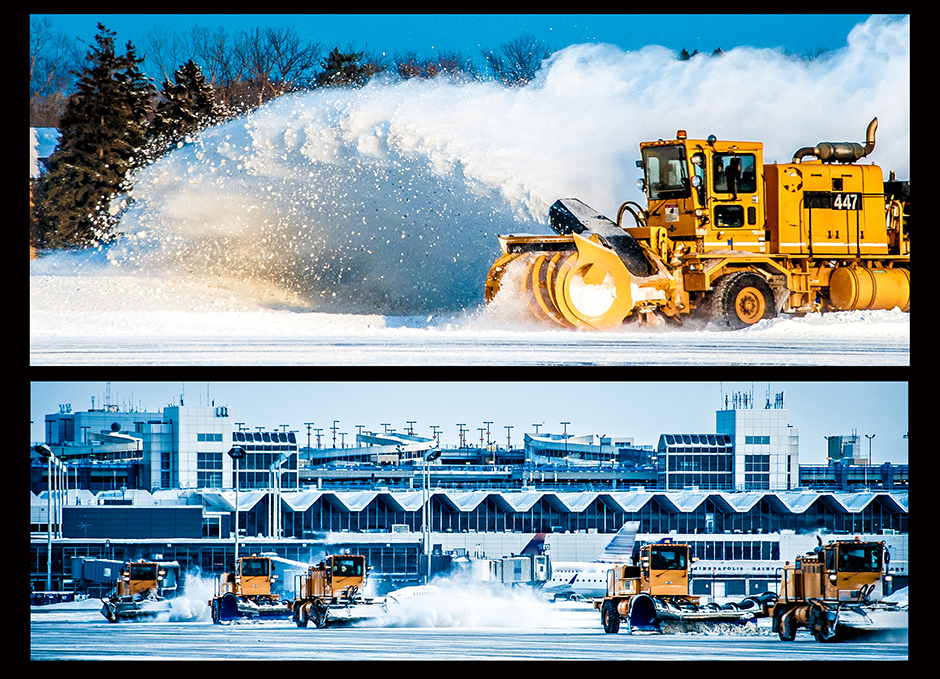
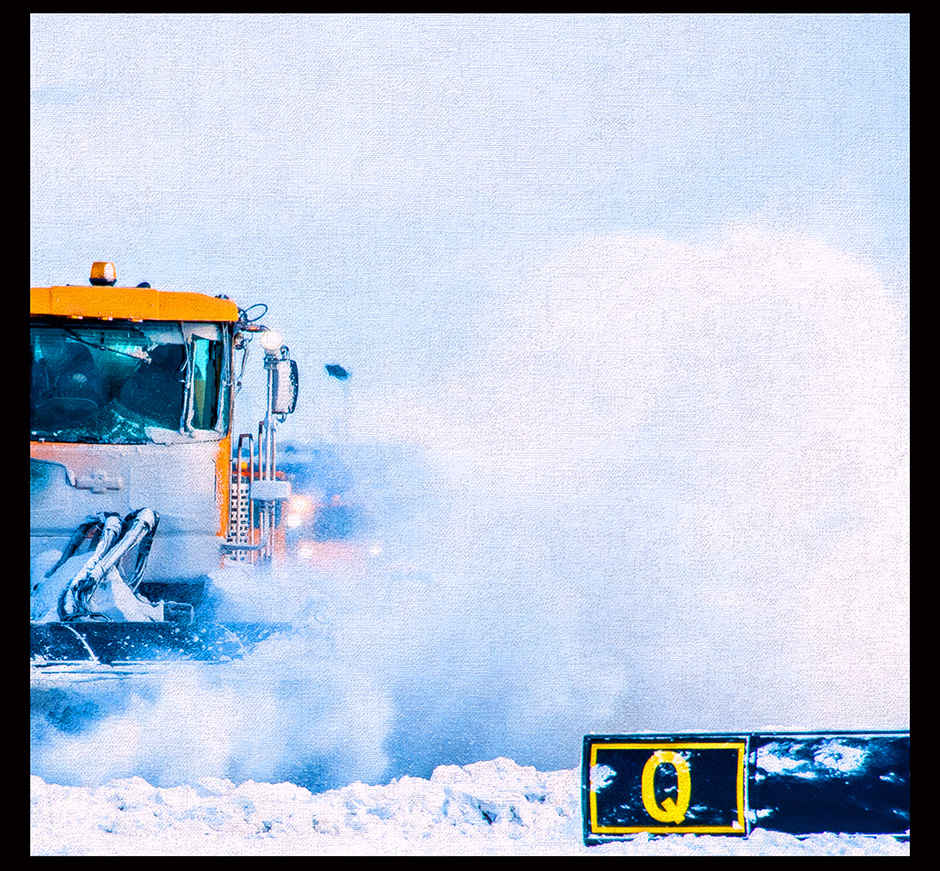
The Winter of 2013-14 will be remembered as brutally cold and snowy, especially by the ground crews at Minneapolis - St.Paul International Airport. They are the most award-winning airport snow removal team in North America. That's a very good thing, without the 100 plus employees and their state-of-the-art snow removal equipment, MSP would just have to close down for about five months of the year. Here are some interesting facts and stats provided by the good folks at MSP:
Here is the challenge–
• More than 6 million square feet of runway surfaces
• 9 million square feet of taxiways
• 9.5 million square feet for aircraft parking
• 2.5 million square feet of de-ice pads
• On average, about 50” of snow per year
• Nearly 1,200 flights per day, on average
• Can’t use salt on the airfield because it is corrosive to aircraft
• When a significant storm hits the Twin Cities the entire crew is called up. They work, eat and sleep at the airport until the storm is over and the job is done.
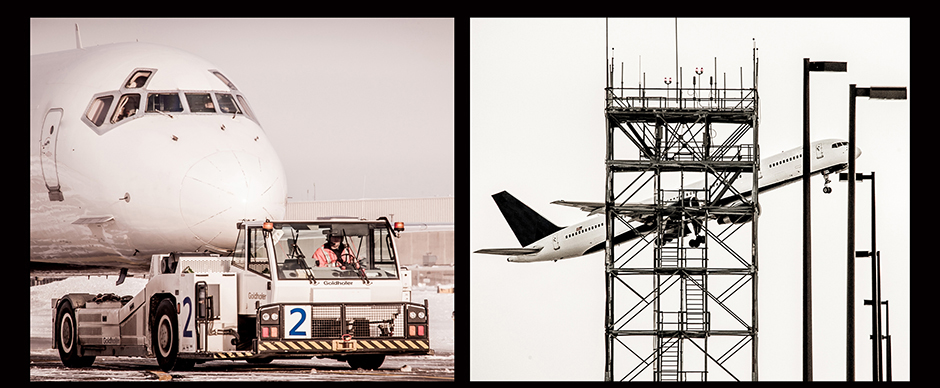
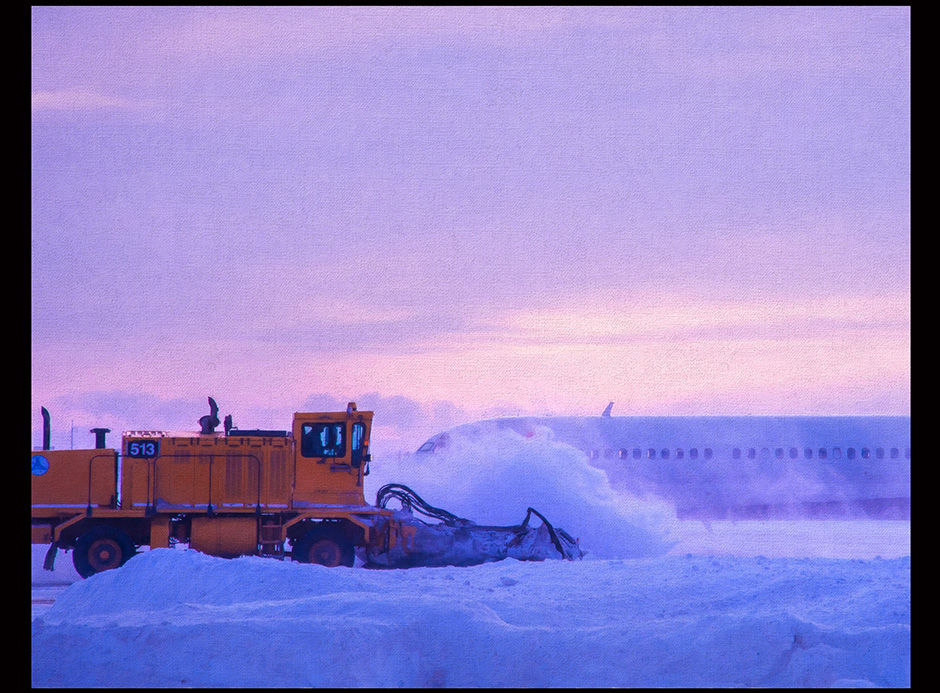
Pre-Storm Activities
• Compare forecasts from National Weather Service and three private services
• 24-hours in advance of storm, engage tenants and FAA in planning calls
• Weather data and staffing plans assist the FAA in setting an estimated arrival rate for MSP, which airlines then use to plan necessary reductions in schedule
• 12 hours in advance, develop snow removal staffing plan, then call out needed staff prior to the storm’s onset
• Use runway surface condition sensors to determine whether chemical
pre-treatment is appropriate, and continue to monitor surface and air temperatures throughout the storm for decisions on chemical treatments
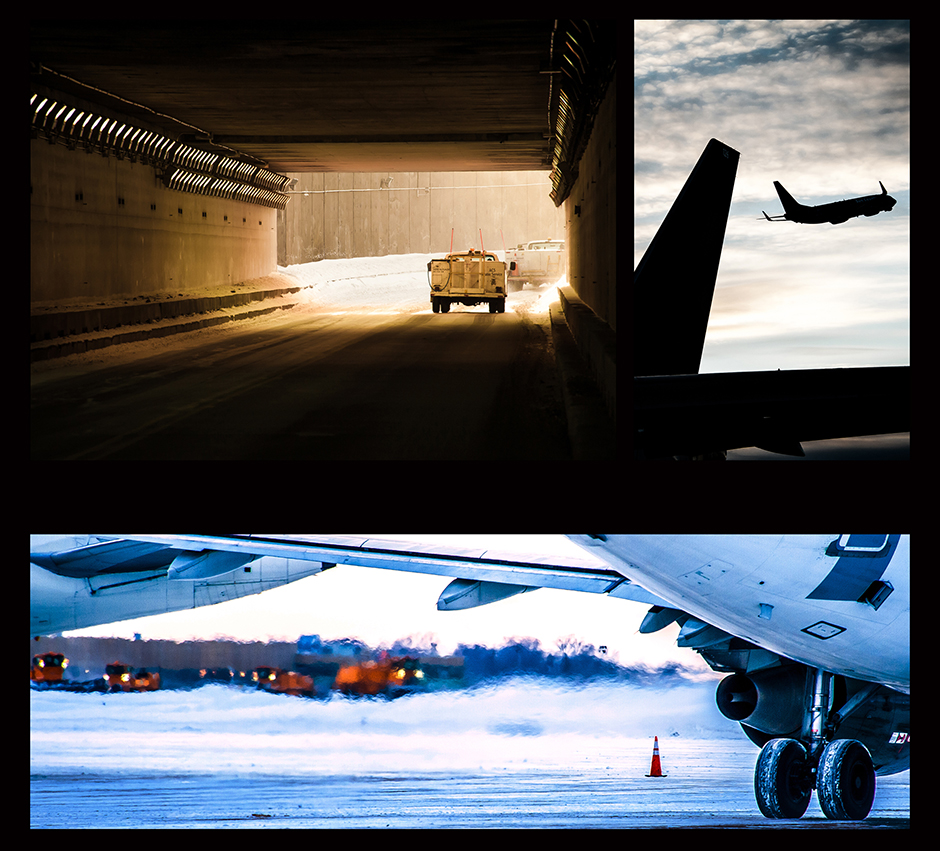

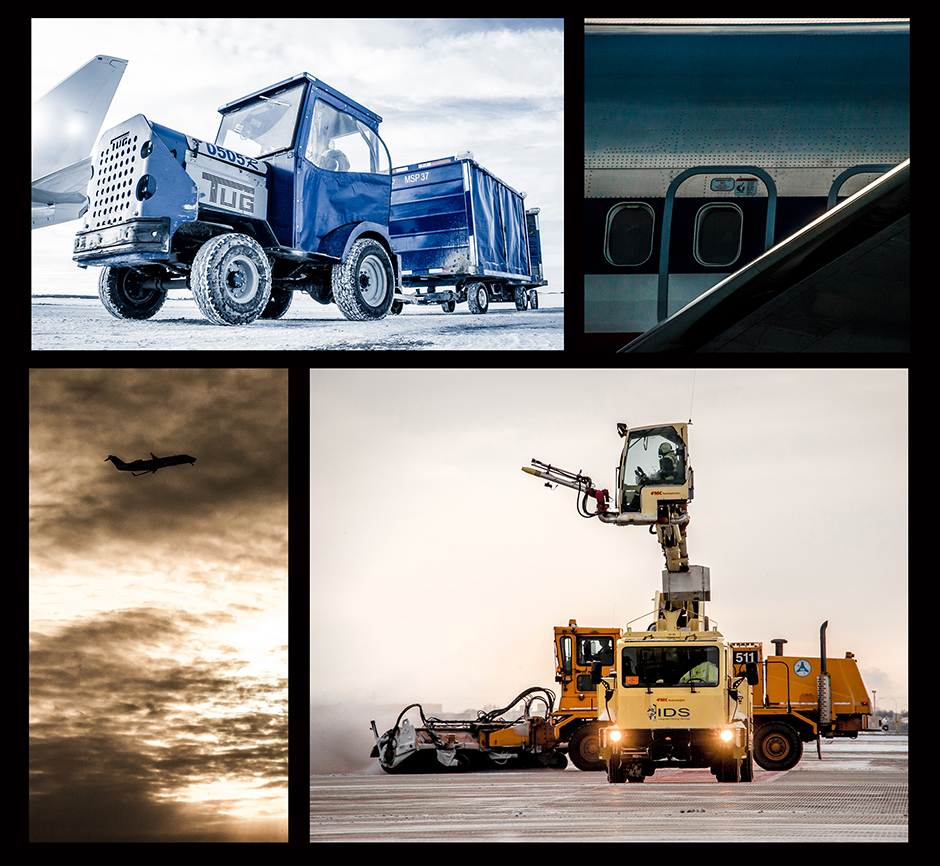
During the Storm
• Continue to monitor forecasts and live weather radar
– Radar vectors plot the direction and speed of different parts of the storm so we know when and where the full impact of the storm is likely to hit and how intense it is likely to be
• Multiple aircraft tracking systems provide a live, graphical view of aircraft on the ground at MSP and those en-route to the airport – information useful in timing the plowing of runways, taxiways, de-ice pads and gate areas
• Use a Web-based broadcast notification system that automatically calls major partners (such as FAA and Delta) to plan and coordinate runway closures
– Time closures first for safety and second to have as little impact on traffic flow as possible
• Conduct friction tests of runway surfaces in three phases:
– Pre-runs: Conducted as soon as the runway closes, prior to plowing, to gain historical data helpful in assessing whether we closed a runway on-time, too early (when frictions are still above the minimums) or later than we maybe should have (with friction below minimums)
– Post-runs: Conducted just prior to reopening a runway after snow and ice control operations are complete
– BAG-runs: Conducted on an open runway between operations to gain a snapshot of friction conditions helpful in timing closures
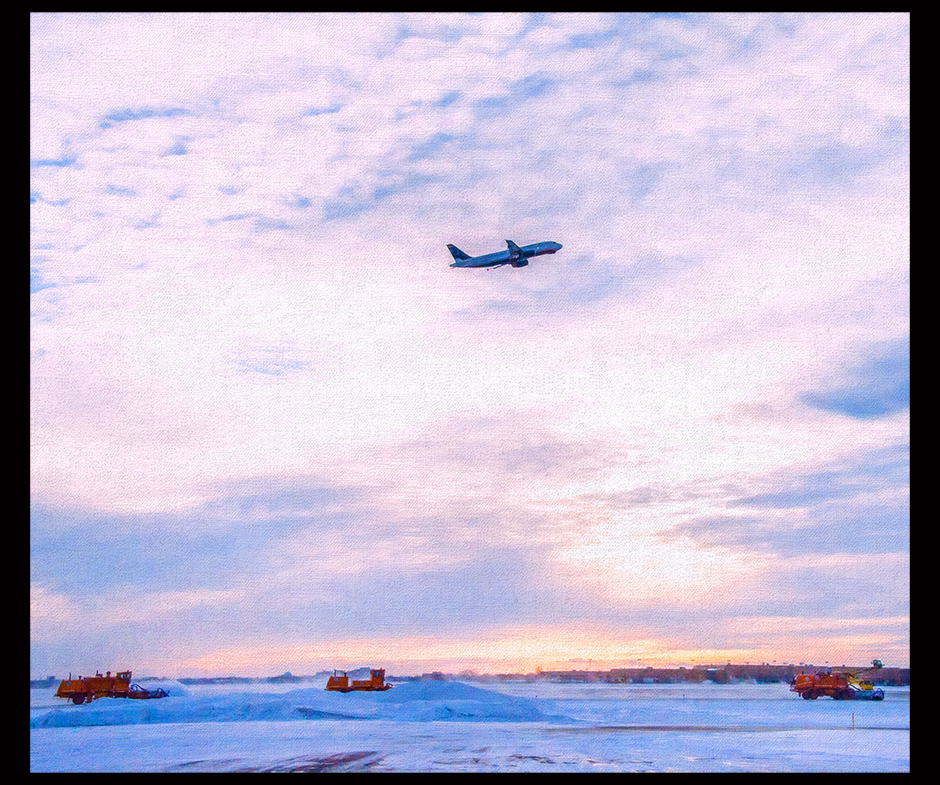
• Laser-based snow depth measuring system mounted on the rear of a vehicle can continuously measure the depth of snow for the entire length of a runway, helping us plan the timing of runway closures
• All data is wirelessly transmitted to the airport’s Airside Operations Center, where it is reviewed and disseminated
• Snow removal vehicles are equipped with GPS tracking systems, giving our Operations Center a real-time assessment of key personnel and
equipment locations
– Helps identify which appropriate vehicle is nearest a location in need of attention so we can respond quickly to priority needs as they arise
– System also enables us to track how long it has been since a plow operated in a certain gate area
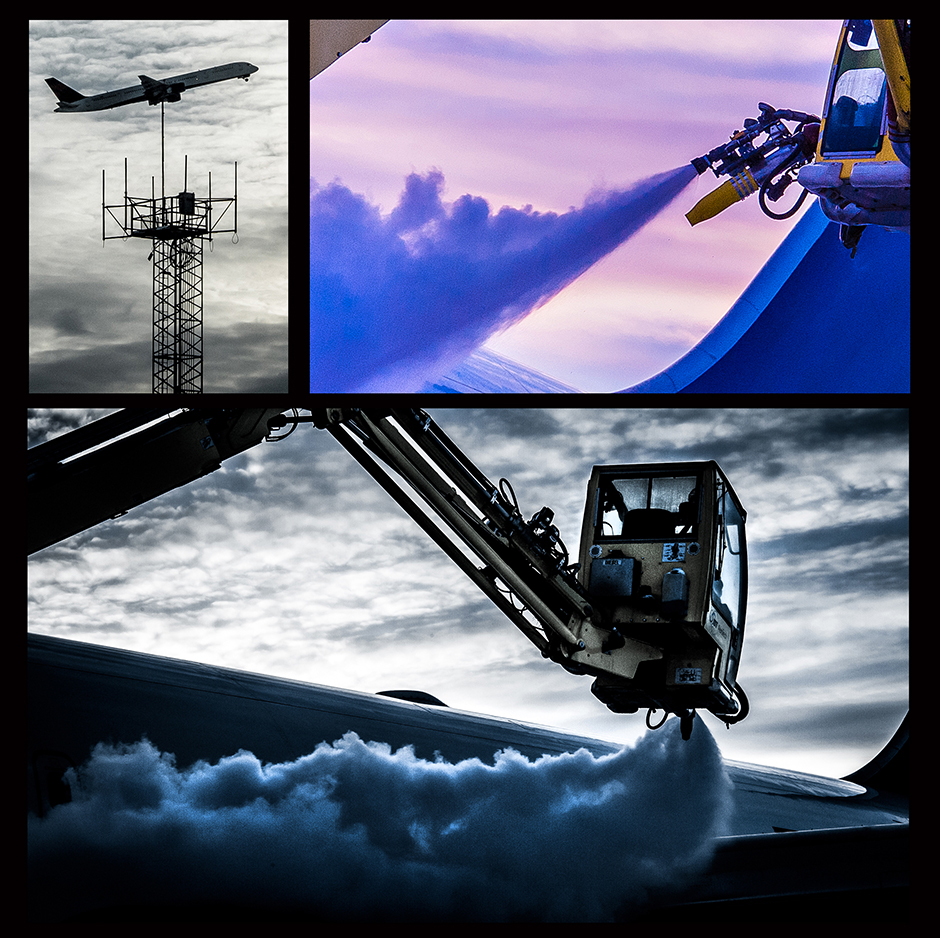
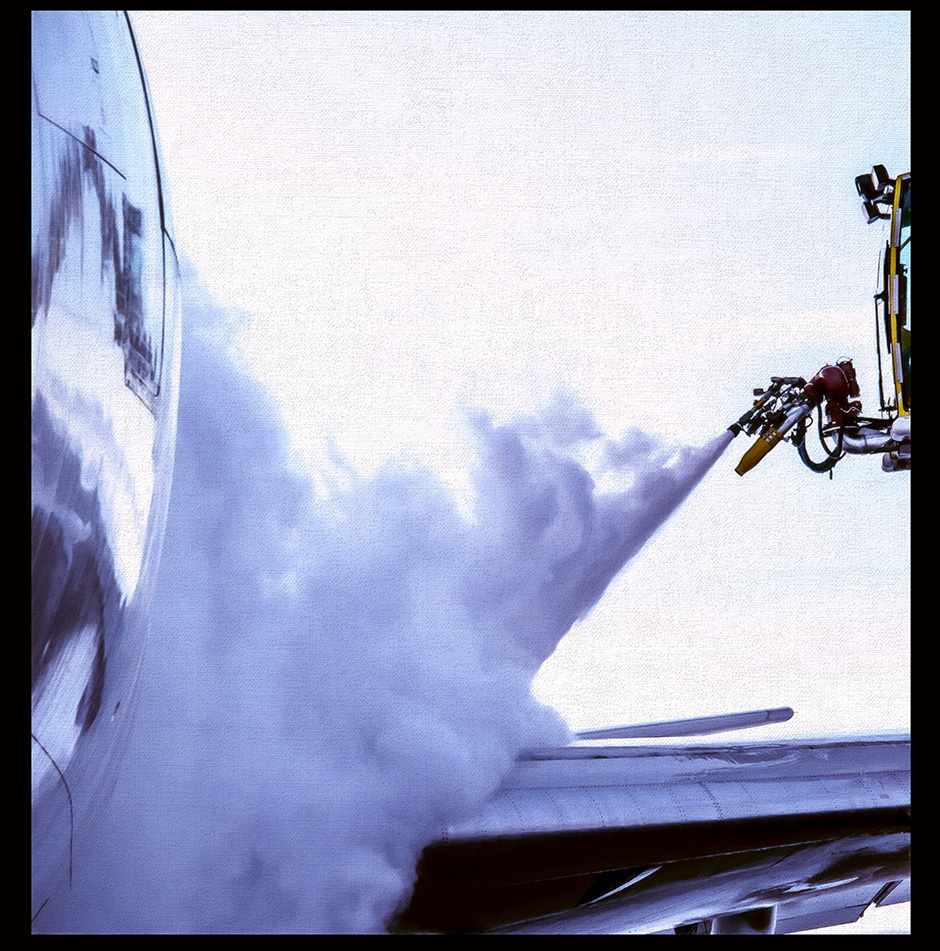
Post-Storm Activities
• A laser snow-bank profiling system affixed to a vehicle marks the height and distance from the taxiways we need to remove snow to ensure taxiway clearance for aircraft
• Have 3 dozen snow melters
– On average, each machine can melt 40 tons of snow an hour
• Depending on how much snow we get, we sometimes also haul snow off airport
• Host a snow critique after every significant storm, at which interested parties gather to review what went well and what can be improved upon going forward
– Can replay storms through archived radar information, aircraft tracking and vehicle tracking systems to see what occurred and what we can learn from it
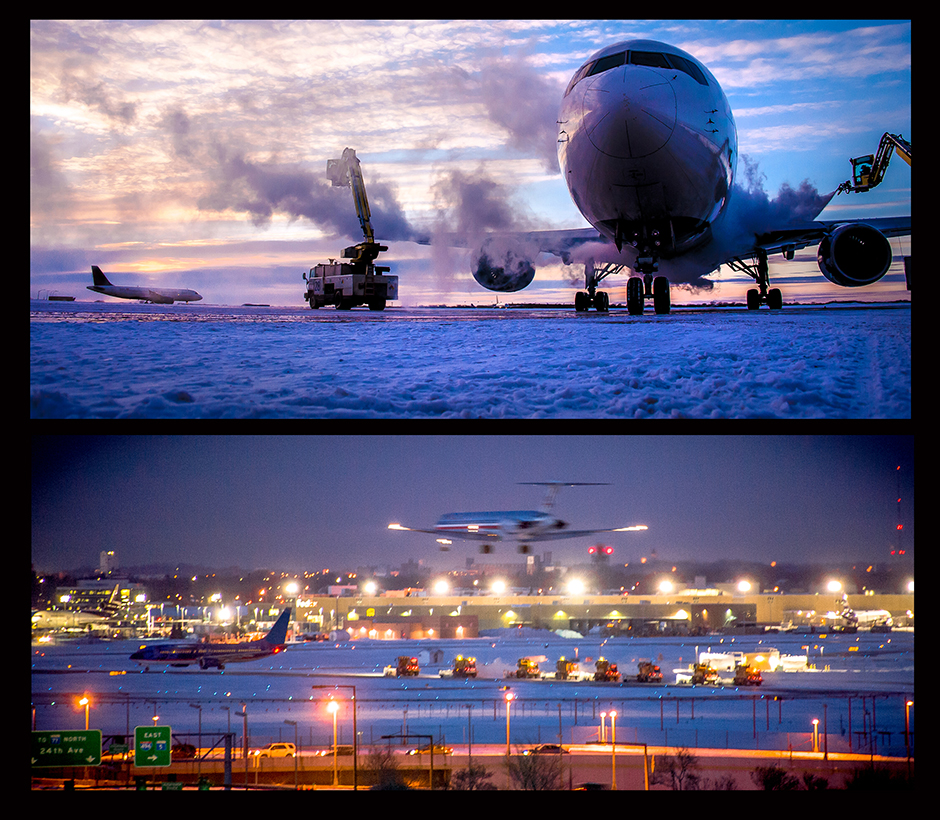
Many thanks to the wonderful staff at the airport that made this essay possible!
Here are some links to see more on this subject:
• A 2006 essay about the waning days of DC-10 flying out of MSP - Aloha, DC-10
